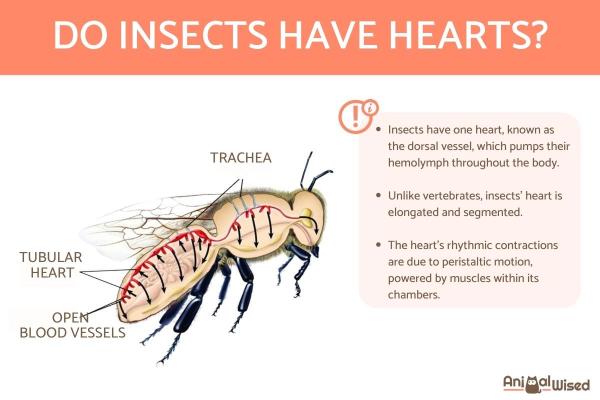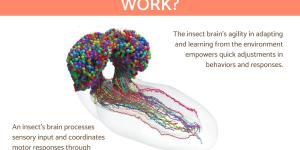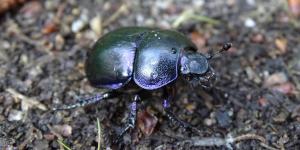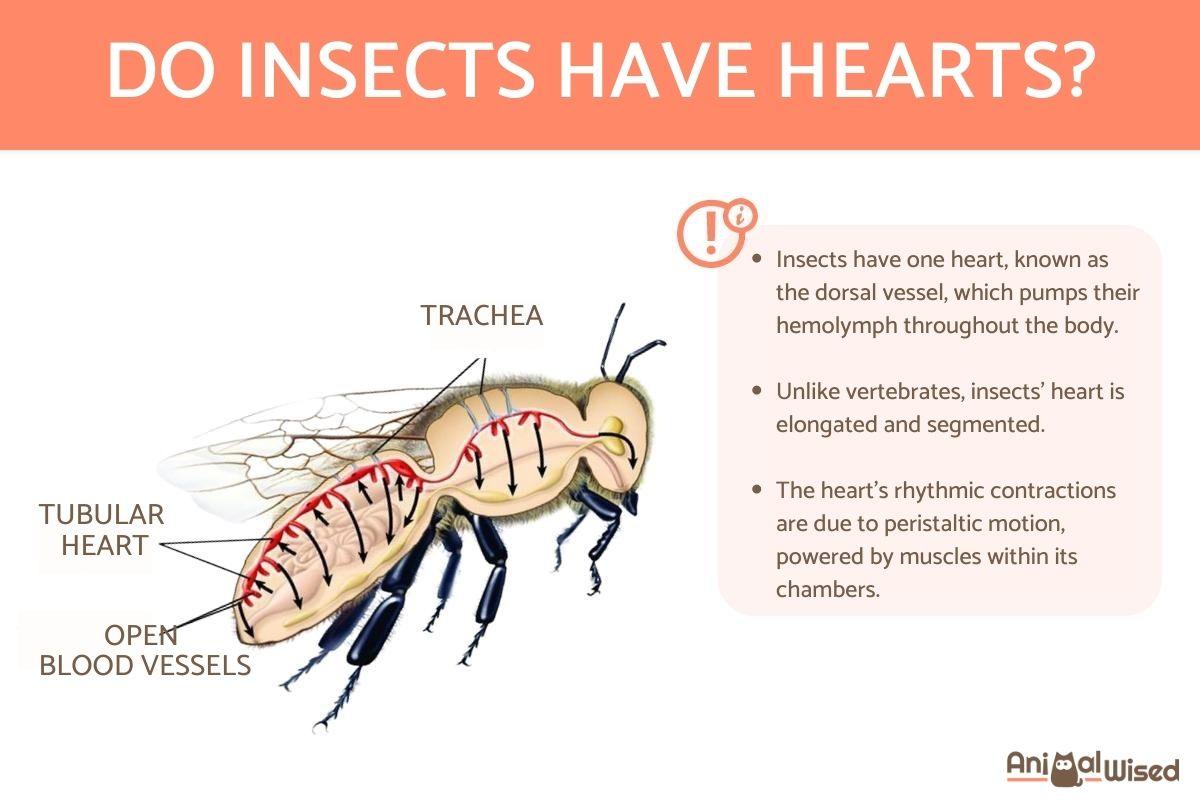Do Insects Have Hearts?


Insects, the most diverse and abundant group of animals on Earth, play an indispensable role in shaping our ecosystems. With an estimated 10 million species identified and possibly millions more yet to be discovered, insects demonstrate an astounding array of adaptations that have allowed them to thrive in virtually every habitat on the planet. A closer look at insect physiology and anatomy reveals a wealth of fascinating questions. A question that piques curiosity about these tiny creatures is whether they have hearts.
The following AnimalWised article provides insights into whether insects have hearts, while also offering details about the functionality of their circulatory system and shedding light on the nature of their blood.
Do insects have hearts?
Indeed, insects do have hearts. This might come as a surprise, given the differences in anatomical structure between insect hearts and those of more familiar animals like humans.
Insects possess a simple tubular structure known as the dorsal vessel, which functions as their heart. This vessel runs along the upper part of their body, from the rear to the head. Unlike the closed circulatory systems in vertebrates, insects have an open circulatory system. This means that instead of using veins and arteries, a fluid called hemolymph flows directly into different parts of their bodies.
However, this hemolymph isn't exactly like blood in vertebrates. It doesn't contain red blood cells and doesn't transport oxygen. Instead, it's rich in amino acids and helps with functions like aiding an insect's expansion during metamorphosis.
Let's break down the key components of an insect's circulatory system:
- Dorsal vessel: this is the only closed organ in an insect's circulatory system. It extends from the back to the head, and it has two main sections: the heart and the aorta.
- Heart: found in the abdomen, the heart pumps hemolymph through the dorsal vessel. It's different from our hearts but serves a similar purpose.
- Aorta: this vessel carries hemolymph from the thorax to the head. It's the main pathway for circulation in insects.
The whole process mainly occurs within the dorsal vessel. Hemolymph passes through valves and ostia—small openings on the sides—until it reaches the simpler aortic structure. Finally, it's distributed to the head. This circulation process ensures the distribution of nutrients, hormones, and assists in various physiological functions like wound healing and immune responses.
Do all insects have hearts?
Absolutely, every single insect possesses a heart. This unassuming yet crucial organ is a linchpin of their survival. Its primary function involves propelling hemolymph throughout the entire body, a process critical for the distribution of nutrients, hormones, and the orchestration of immune responses within insects. Remarkably, the heart also plays a pivotal role in wound healing and, notably, in the metamorphic journey these creatures undergo.
How many hearts do insects have?
Insects, unlike some other creatures such as octopuses, have a singular heart. While octopuses possess three hearts that serve distinct functions, insects rely on a lone heart for their circulatory needs.
How does an insect circulatory system work?
As we've touched upon, insects showcase a distinct anatomical feature known as the dorsal vessel—a crucial component of their circulatory system. This elongated structure runs along the dorsal wall of the insect's body, stretching longitudinally from the thorax through to the abdomen. It's noteworthy that this vessel is fashioned from delicate membranous tissue, reflecting the intricate nature of insect physiology.
The segment of the dorsal vessel corresponding to the abdomen is aptly referred to as the "heart." This insect heart exhibits an elongated configuration, characterized by its segmentation into different chambers. Within these chambers reside valves that play a pivotal role in governing the unidirectional flow of hemolymph—the insect equivalent of blood.
Fascinatingly, the insect heart doesn't rely solely on the passive action of these valves. Instead, it employs structures akin to muscles positioned along the chamber walls. These muscular elements orchestrate peristaltic movements, inducing the rhythmic pulsation necessary for hemolymph circulation.
The rhythm of these contractions isn't uniform across all insects, varying from a steady 30 beats to a more rapid 200 beats per minute. Intriguingly, there exists a correlation between ambient temperature and insect heartbeat—a rise in temperature often corresponds to an increase in heart rate, and vice versa.
Additionally, the insect heart holds its position within the abdominal region, extending towards the posterior. Directly preceding it, the aorta takes its place—an integral conduit with a simpler structure. Unlike the intricate valves and muscular tissue found within the heart, the aorta assumes a more straightforward form, functioning as a tube without valves or muscular components. This aortic structure extends toward the head, fulfilling a vital role in the overarching circulatory mechanism of insects.
For a deeper understanding of tracheal respiration in insects, be sure to read this additional article.
How is insect blood different from our own?
Insect blood, or hemolymph, and human blood share some fundamental roles in circulation and nutrient transport, but they have significant differences in composition and function.
Unlike human blood, which contains various types of cells, including red and white blood cells, insect hemolymph lacks specialized blood cells. It mainly consists of a fluid matrix, in which certain immune cells called hemocytes are suspended. These hemocytes play a role in defending against infections and maintaining the insect's immune system.
While human blood relies on red blood cells to transport oxygen using the protein hemoglobin, insect hemolymph doesn't transport oxygen in the same way. Insects primarily rely on a network of tiny air tubes called tracheae to deliver oxygen directly to their cells. Hemolymph is involved in carrying some oxygen, but its role in oxygen transport is limited compared to our blood.
Both human blood and insect hemolymph play a role in distributing nutrients throughout the body. However, insect hemolymph contains a higher concentration of free amino acids, which serve as an essential energy source for their metabolic needs.
Finally, human blood appears red due to the presence of hemoglobin, whereas insect hemolymph can vary in color from clear to pale yellow, green, or even blue, depending on the insect's diet and specific pigments present.
You might be interested in this other article, where we delve into greater detail about the blood of insects.
If you want to read similar articles to Do Insects Have Hearts?, we recommend you visit our Facts about the animal kingdom category.
- Brittanica. (2022). Insects . Available at: https://www.britannica.com/animal/insect/Circulatory-system
- Mever, J. (2005). Insect physiology . Circulatory system . Available at: https://web.archive.org/web/20090927000720/http://www.cals.ncsu.edu/course/ent425/tutorial/circulatory.html
- Kanost, M. (2009). Hemolymph , Editor(s): Vincent H. Resh, Ring T. Cardé, Encyclopedia of Insects (Second Edition). Available at: https://doi.org/10.1016/B978-0-12-374144-8.00126-0





